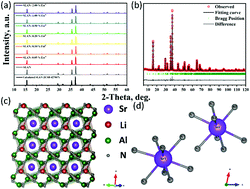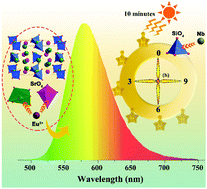J. Lumin., 2020, 222, 117190. https://doi.org/10.1016/j.jlumin.2020.117190.
Persistent luminescence phosphors with long duration and high emitting intensity have attracted considerable attention for applications in safety signage and energy storage. Herein, we successfully introduce non-equivalent ions Si4+ into Al3+ sites in the garnet phosphor Y3Al2Ga3O12:Ce3+,Yb3+,B3+ by conventional solid-state reaction. The persistent luminescence duration has been dramatically enhanced over 40 h at the 0.32 mcd/m2 threshold value after visible light radiation, almost twice longer than the sample without Si4+. Moreover, the afterglow emission intensity of the persistent luminescence is also improved. We confirm that the synthesized phosphors possess not only deeper trap depth but also wider trap distribution and higher trap density after the cooperation of Si4+. The initial rise approach is used by performing a series of thermoluminescence analyses at various temperatures after 432 nm excitation, which demonstrates the exact trap distribution from 0.47 to 1.11 eV. At the end, the mechanism of the persistent luminescence is depicted using a schematic energy diagram of the vacuum referred binding energy of Y3Al2Ga3O12.



